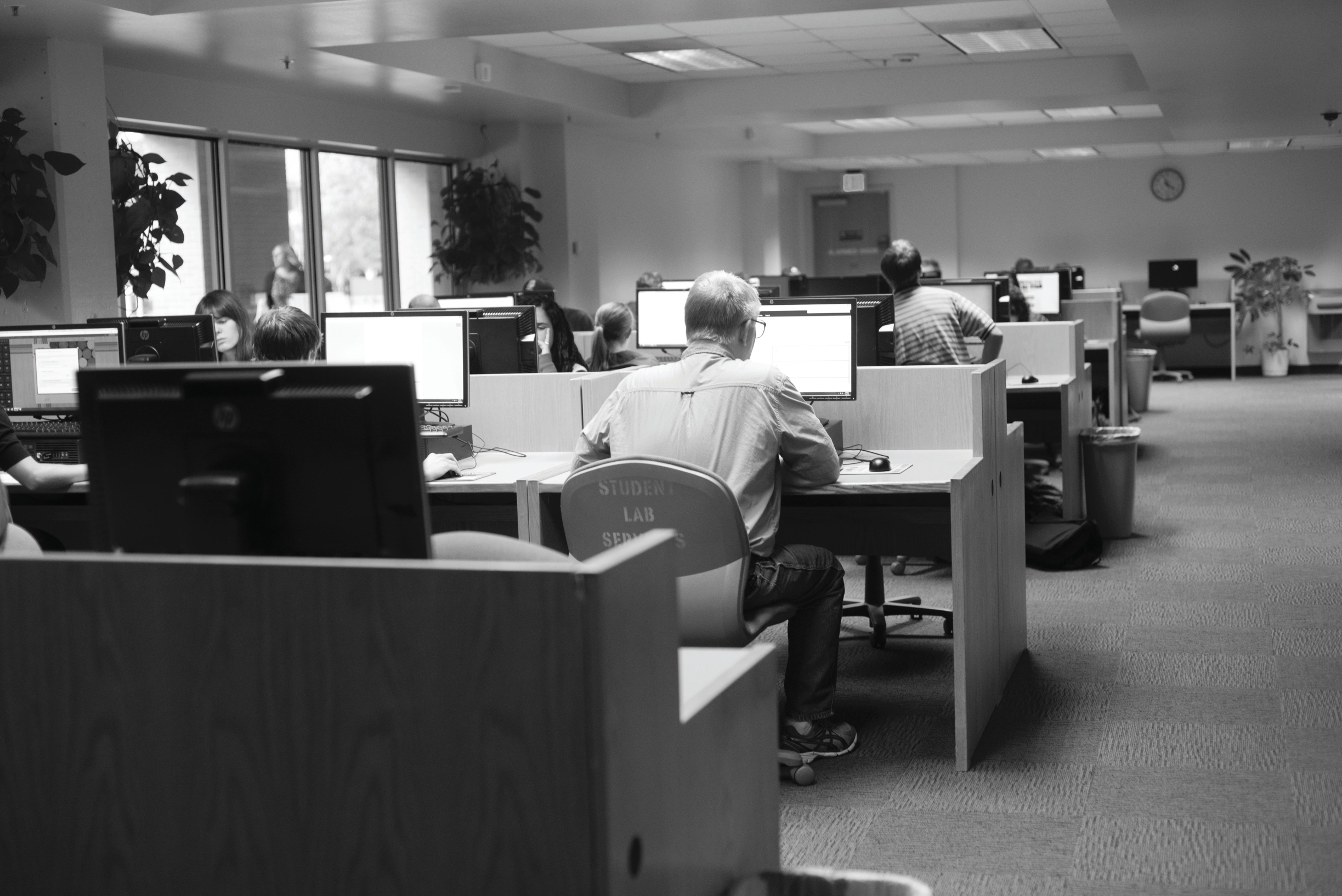Campus IT works to fix Wi-Fi network
Students sometimes experience connectivity issues when using Bluezone, the campus wireless fidelity network. But when choosing from the list of available networks, some students have wondered exactly what the network “Bluezone Secure” is and how it works.
“Bluezone Secure is an encrypted wireless network,” said Kevin Reeve, spokesperson for USU’s information technology department. “When you connect to it, the data that flows between your wireless device and the access point nearby is encrypted. It prevents someone nearby from snooping on your wireless signal.“
Reeve said students can benefit from registering their wireless-capable devices with the university.
“Once you have registered your device on the network, it will be registered no matter which USU campus you visit or where on the campus you roam,” Reeve said. “There are 1,266 access points that make up the Bluezone wireless network, including those at the regional campuses and in on-campus housing.”
In recent years, wireless-network use at the university has increased sharply, Reeve said.
“A year ago, we were seeing a 15 to 20 percent increase in additional wireless devices showing up on our network every semester,” Reeve said. “Now we are seeing a 25 percent increase. You now see students carrying around two or three wireless devices with them.”
Reeve said the speed of wireless devices such as laptops and smartphones can vary between service providers and other factors.
“Smart phones have the option to use the cellular carrier’s data network or Wi-Fi like Bluezone,” Reeve said. “It depends on the service provider, customer’s plan and also Wi-Fi access point location. I actually get faster downloads on my AT&T iPhone than I do on my home Comcast network because of the data plans I have purchased.”
Some students have noticed a dramatic change in wireless speed this fall. University officials are convinced this is because of an increase in the number of connected devices.
“So far this semester, we have seen a peak of 11,253 wireless devices connected to Bluezone at the exact same time. That is a 25 percent increase over the peaks we had seen the first few weeks of spring semester,” said Morlyn Seamons, USU network specialist. “On any given weekday, we will see a constant connection of 10,300-10,500 simultaneous wireless devices.”
Seamons said there are certain times when students should avoid using the network if they are looking for a fast connection.
“Those peaks happen during the noon hour,” Seamons said. “In on-campus housing areas, the peak usage happens between 10 p.m. and midnight.”
Each access point can handle between 20 and 30 simultaneous connections, Reeve said.
“The more devices that connect to it, the less bandwidth that is available to everyone, so eventually it causes access to the internet to be very slow or almost nonexistent, or you just cannot connect or keep getting disconnected,” Reeve said.
This type of problem happens most commonly in classrooms where 50 or 60 devices try to connect to an access point nearby, Reeve said.
“Sometimes those devices are still in your pocket but still alive and still connect to the wireless access point,” Reeve said. “You can help by turning the Wi-Fi off on your devices when not in use.”
With such a huge change in the usage of the Wi-Fi, there’s not enough bandwidth to accommodate all the electronic devices on campus. However, there is a solution to the problem.
“We recognized last year that the current wireless system, while only 3 years old, needed to be replaced to keep up with the demand,” said Eric Hawley, associate vice president for information technology and chief information officer. “We started the process to find a more robust wireless system that can better accommodate the rapidly-growing number of wireless devices and support the newest wireless technologies.”
After an extensive trial-and-error process, the university has chosen a new system and has started working to
replace the entire wireless network, Hawley said. USU is making an investment of $1.5 million to upgrade the wireless system.
“This will not be a simple upgrade,” said Kevin Grover, USU networking team coordinator. “We are not just going in and pulling the old access points out and putting new ones in their place. We are going through every building, looking at the high demand areas, checking wireless coverage patterns in every room and re-engineering where every access point will go. We expect this effort will result in more access points, and better coverage for everyone.”
Reeve said the network replacement will not happen overnight, but the IT team is committed to getting it in and operational as soon as possible.
“We plan to start the upgrade in high demand areas, like the business building, Old Main, and the library,” Reeve said. “The engineering of the new system is happening now, and we will start installing as soon as we can.”

